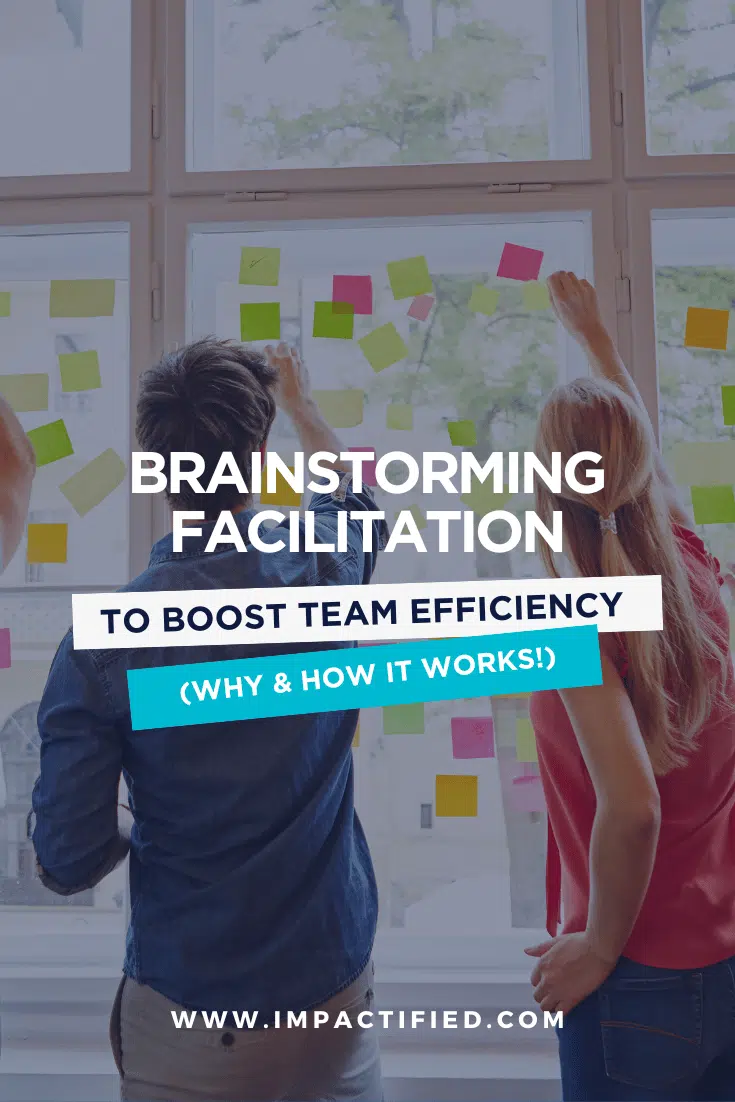Every entrepreneur searches for that unique strategy or innovation that has the capacity to get their business to the next level by unlocking new revenue streams. One question keeps coming back, however: where to start, and how to make a difference without reinventing the wheel?
Luckily, the most effective solutions are often rooted in tried-and-true methodologies, and all it takes to make a difference is a fresh and challenging perspective on things!
If your goal is to boost your numbers (and scalability, and profitability), then implementing a SWOT analysis [which stands for Strengths, Opportunities, Threats, and Weaknesses] is a very efficient way of reshuffling the cards.
Let’s be clear, though. We are not talking about the type of SWOT you might remember from business school (if you went to business school, that is). No!
Instead of a broad-brush approach focusing on external market forces and pressures that won’t make a difference on your bank account, you want to follow a targeted approach to business development and income generation!
Imagine this: a classic framework turned into a strategic powerhouse directly correlating with revenue stream development. How does that sound?
At Impactified, we know the importance of not reinventing the wheel when it comes to business efficiency, which is why we have built on old ways to make a modern, income-focused, proprietary business lever that really makes a difference.
And we have written this article to unravel the art and science behind running a SWOT that pays. As we journey through this guide, we’ll delve into:
- Visionary Planning: Crafting a success story and brand with a clear, future-focused direction.
- Building Business Resilience: Strategies to ensure profitability, understand cost structures and diversify income streams.
- Commercial Strategy Optimization: Differentiating value propositions, targeted sales strategies, and establishing a robust business funnel.
- Leveraging Automation: Boosting efficiency and income through technological advancements.
- Cultivating Business Leadership: Transitioning from mere management to inspiring leadership, enhanced by effective coaching programs.
- Strategic Business Acceleration: Working on scalability, brand culture, and always having an exit strategy ready.
By breaking down the key concepts, we’ll explain how to harness the full potential of an income generating SWOT analysis, and we’ll show you how to pick the low hanging fruits in ways you’ve never imagined. Connect with us through this exploration and unlock the transformative power of a revitalized SWOT for your business!
Global Vision Capacity: See the Bigger, Moneymaking Picture
One of the most effective ways to boost your business’ revenue streams is by capitalizing on the low-hanging fruits you haven’t picked up yet— those immediate opportunities that can bring quick returns. And the first place to look at is your global vision capacity, or your ability to look at what doesn’t pay the bills just now.
Firstly, having a success story in mind is paramount. This isn’t about wishful thinking; it’s about visualizing where you want your business to be, and crafting a narrative around that aspiration. Such a narrative attracts clients and potential partners, akin to a beacon of light, signaling that your business is forward-thinking and ambitious.
Next, a five-year direction helps in anchoring this vision. It allows you to anticipate industry trends, client needs, and potential challenges. By strategizing for the medium term, businesses can place themselves ahead of competitors focusing solely on immediate gains. Having a five-year plan gives stakeholders confidence in the sustainability and growth potential of the business, which, in turn, can open up new revenue streams and investment opportunities.
SMART goals (Specific, Measurable, Assignable, Realistic, Time-bound) then act as the engine that drives your vision forward. While having a grand vision is essential, the realization of this vision comes from breaking it down into actionable steps. SMART goals ensure that every action taken is efficient and purposeful to contribute directly to income generation.
Lastly, but by no means least, is having a brand with a strong DNA strategy. A strong brand DNA distinguishes you from the crowd in an era of abundant choices. It’s more than just a logo or tagline. It embodies your business values, mission, and promise to customers. A strong brand attracts customers and can command premium pricing, leading to increased revenue.
Hint: while those points may sound basic, they are largely left unleveraged, which makes them a major aspect of business coaching.
Building Business Resilience: A Key to Sustainable Growth
In today’s dynamic business environment, merely riding the wave of immediate opportunities isn’t enough. Building business resilience (financial and operational) is also paramount for a business to withstand time and uncertainties. This resilience is the bedrock that ensures sustained income generation, even in turbulent times!
Profitability modelling is more than an analytical tool—it’s a foresight mechanism. By anticipating how various business decisions will impact profitability, companies can make informed choices, steering clear of ventures that might seem lucrative initially but can hurt the bottom line in the long run. Profitability modelling becomes an essential compass, directing businesses toward genuinely profitable ventures. How come so many businesses omit the point?
Understanding and leveraging your cost structure is also critical. Not all costs impact the business in the same way, but they can provide opportunities as far as business model innovation is concerned. Businesses can maximize profitability by differentiating between fixed and variable costs and strategizing around them. It then becomes easier to determine pricing strategies, identify cost-saving opportunities, and ensure that the business remains cash-flow positive.
Furthermore, knowing your comparative advantages against the competition is vital in the business battlefield. It’s not just about being good; it’s about being better in specific areas that matter to your clientele. By honing and highlighting these advantages, businesses can attract a larger customer base, ensuring steady revenue.
Another strategic move is diversifying income sources. Relying on a single income stream is akin to putting all eggs in one basket. Diversification, whether through introducing new products, entering new markets, or building ancillary services, spreads the risk and ensures that the business has multiple avenues of revenue.
Lastly, cash flow analysis and business planning shouldn’t be viewed merely as administrative tasks. They are, in fact, cash-making tools. They clarify where the money is coming from and where it is going, helping businesses make informed decisions about investments, expansions, and even cost-cutting.
Overall? Building business resilience is about creating a fortress around your revenue streams. But more topics should be included in a money-making SWOT assessment, such as business model innovation, process improvement, and progress monitoring. Whatever comes next, your business will have a stronger chance to stay robust and revenue-positive.
Commercial Strategy: The Treasure Map to More Gold
Another pillar to consider when trying to generate new income streams is your commercial strategy, obviously. An effective commercial strategy doesn’t merely focus on selling products or services; it’s an intricate blueprint for sustainable growth. By optimizing your commercial setup, you cement your position in the market, ensuring that your business doesn’t just survive but thrives. Impossible to miss as part of a SWOT assessment!
Central to this is your value proposition. It’s more than just a marketing statement—it’s a promise of value that sets you apart from the competition. In a saturated market, businesses with a clear and compelling value proposition capture potential customers’ attention and maintain existing ones’ loyalty. You create a magnet that pulls clients toward your business by clearly defining what makes your offerings unique.
Understanding market dynamics through a substitutability analysis and market analysis is also crucial. The former helps businesses identify potential threats from alternative products or services. At the same time, the latter provides insights into market trends, customer preferences, and competitor moves. Together, they paint a picture of the market landscape, enabling businesses to navigate it effectively.
With a clear market perspective, a targeted sales strategy becomes more potent. Instead of a one-size-fits-all approach, businesses can tailor their sales tactics to resonate with specific customer segments. This not only increases sales efficiency but also results in higher conversion rates. Accompanying this is a complementary product strategy that ensures the offerings are in sync with the sales approach, guaranteeing that what’s being pitched aligns perfectly with what’s being delivered.
Logically, the foundation of any commercial strategy is also to have a reliable sales funnel. It’s not enough to attract prospects; the real success lies in converting them into paying clients. An optimized funnel ensures that each stage, from awareness to purchase, is seamless, engaging, and tailored to the client’s journey. It effectively turns interest into revenue.
Again, more ideas would typically be leveraged during business coaching sessions: sales management processes, pricing models, customer journey optimization, blue ocean strategy differentiation methods, website optimization (for better conversion), or storytelling and pitch improvement.
The options are numerous, but whatever your preferred angle, optimizing commercial strategy and setup is akin to fine-tuning an engine for maximum performance. Eventually, by ensuring each component works harmoniously, businesses can accelerate growth and solidify their market position.
Automation: Make Money While You Sleep
In the modern business landscape, automation isn’t just a luxury—it’s necessary for scaling and ensuring consistent growth. By embracing automation opportunities, businesses can supercharge their income by streamlining operations, enhancing customer satisfaction, and mitigating potential risks.
At the heart of automation lies the principle of making routine tasks more efficient. Tasks that once consumed hours, if not days, can now be accomplished in minutes. Whether it’s data entry, report generation, or inventory management, automating these processes frees up valuable time. This efficiency reduces operational costs and allows teams to focus on more strategic, revenue-generating tasks.
Delegating also tasks becomes easier with decision-making process definition. Advanced strategic thinking can help assign tasks based on employee availability, skill sets, or workload, ensuring a balanced and productive environment. With tasks aptly delegated, there’s less room for errors or delays, leading to better outcomes and happier clients.
Speaking of clients, tracking customer satisfaction is paramount. Automated feedback systems and surveys can provide real-time insights into customer sentiments. Businesses can preemptively address issues by continuously gauging and responding to feedback, ensuring customer loyalty and repeat business.
A reliable financial follow-up and anticipation system is another gem in the automation arsenal. By keeping a real-time tab on finances, businesses can make informed investment decisions, forecast financial health, and identify potential cash-flow challenges before they become critical.
Further, the automation of payments ensures timely transactions, reducing the chances of late fees or missed payments. It guarantees a steady cash flow and builds trust with vendors and partners. In a world where data is invaluable, automated backups also ensure businesses are always ready to recover from unforeseen tech disruptions, safeguarding operations and reputation… there are again many topics to take into consideration but, in essence, leveraging automation opportunities is like setting the stage for a performance where efficiency takes the lead, directly influencing income and profitability.
Lit Leadership: A Team That Brings in the Bucks
True business growth is not solely a product of market strategy or product innovation—it’s also deeply intertwined with leadership. While market leadership positions a company at the forefront of its industry, internal leadership ensures that the engine powering this dominance is efficient, motivated, and forward-thinking.
Achieving market leadership is a significant milestone. It means that a business isn’t just participating in the market; it’s setting the tone, influencing trends, and shaping customer expectations. Such a position amplifies brand visibility and trust, increasing customer loyalty and revenue. But sustaining this leadership requires an internal force of leaders, not just managers.
Managers can ensure tasks are done; leaders inspire people to want to get things done. Leaders cultivate a culture of innovation, encourage risk-taking, and, most importantly, foster an environment where every team member feels valued and driven. This transformation from manager to leader is where the true potential of a business unfolds.
The metamorphosis of turning managers into leaders isn’t automatic. It requires investment, primarily through coaching programs. Coaching goes beyond traditional training; it’s personalized, focusing on unlocking an individual’s potential. It helps managers understand their strengths, navigate weaknesses, and cultivate a leadership mindset.
By setting up coaching programs, businesses are not just training staff; they are planting seeds for future leaders. These leaders, in turn, can mentor their teams, ensuring that the leadership culture permeates every level of the organization. The ripple effect? An organization where paperwork isn’t the end goal—because building the business is.
In conclusion, leadership, both in the market and within the organization, is the linchpin of sustainable business growth. By prioritizing leadership development, companies set themselves on a trajectory where growth is not just an aspiration but a tangible, achievable reality.
Acceleration: Quick Moves = Quick Cash
In the business growth journey, acceleration is not just about speed but strategic momentum. It’s about ensuring that every step taken is not just forward but also upward, propelling the business towards greater heights and broader horizons.
To provoke growth, a fundamental principle is to work ON the business rather than merely within it. While routine tasks keep the wheels turning, they don’t necessarily steer the vehicle in a growth direction. Business leaders must periodically rise above the daily grind, assessing and recalibrating the company’s strategic direction. This bird’s-eye view helps them to spot opportunities and threats long before they’re evident at ground level.
Central to this overarching vision is business planning. But it’s crucial to understand that planning isn’t a one-off activity confined to drafting a business plan. It’s an ongoing process of anticipating cash flow requirements, understanding investment needs, and adapting to market dynamics. A well-thought-out plan serves as both a compass and a roadmap, ensuring the business remains both directionally correct and financially healthy.
The soul of any business lies in its culture. By building a brand culture that uplifts and motivates, businesses don’t just retain talent—they attract it. This concept of employer branding turns employees into brand ambassadors, fostering an environment of loyalty, creativity, and productivity.
For acceleration to be sustainable, businesses must be scalable. This scalability, in turn, enhances bankability. Investors and financial institutions are more likely to back a business that showcases the potential for scalable growth, guaranteeing better financial partnerships.
Lastly, every business leader must have both an exit strategy and a valuation target in mind! Whether it’s a potential acquisition, merger, or public offering, having a clear endgame ensures that daily operations and strategic decisions align with these long-term objectives.
In essence, business acceleration is a harmonious blend of foresight, strategy, and adaptability. It’s about setting the pace today to ensure the zenith of tomorrow.
Making Money, the Modern SWOT Way
Being a business leader is exhilarating, especially when the cash register doesn’t stop ringing. By integrating these modern SWOT principles into your daily operations, you are not just running a business; you are supercharging it to be a money magnet.
Success isn’t just about innovation or market presence in the ever-evolving business landscape. It’s about visionary planning, building a resilient foundation, optimizing commercial strategies, embracing automation, nurturing leadership, and strategically accelerating growth. Each section we’ve delved into is a pillar, supporting and enhancing the others, forming a holistic blueprint for sustainable and impactful business success.
But knowledge without action is merely potential unrealized. To truly harness the insights from these sections and translate them into tangible results for your business, personalized guidance is invaluable. Let’s embark on this journey together.
Act now. Book your first business coaching session with us and set your business on the path to unparalleled growth and success. Don’t just aim for the stars; let’s chart the course together.







